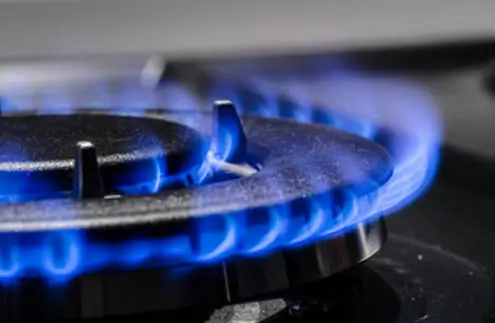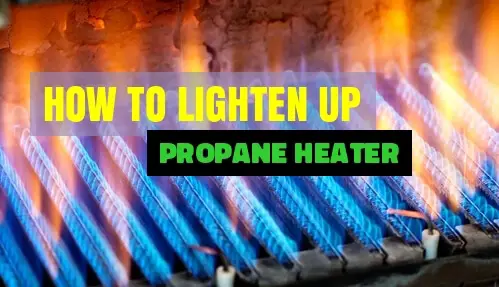So you’ve now got a new tankless water heater that suits your daily requirements. But hey! Wait for a sec- have you got your tankless water heater properly vented?
A bit of gas leak could turn your home into a toxic chamber. I’m sure that you would not want to deal with it. Venting properly keeps your home safe and surroundings much pleasant.
Either you choose exhaust based model or an electric tankless heater, venting it properly should be a top priority.
Here is a complete guide on tankless Water Heater Venting if you’re confused about what to do.
Options for Venting a Tankless Water Heater
There are three major types of options available for you to vent your water heater. They are:
- Chimney Vent
This is the highest length when it comes to venting. It connects with the duct of your chimney and clears the space.
- Power Vent
Power vent refers to connecting with the exhaust of your room. With the exhaust fan running continuously, the toxic fumes can keep out.
- Direct Vent
The direct vent means that it leaves no space behind. Venting is done from just behind the tankless water heater.
Facts to Consider Tankless Water Heater Venting
Most importantly, introducing a tankless water heater is an exceptionally unpredictable strategy, so you should call a handyman to sort it out. At that point, carefully search for the spot in your washroom or kitchen where there is sufficient freedom area to introduce the gadget with appropriate ventilation settings.
Since the warmed air needs to escape through an outlet, so ensure that there are no odds of wet gathering in the area it’s being introduced.
Something else that should be dealt with is within a cross-sectional area of the fumes that shouldn’t be more than multiple times the pipe’s cross-sectional area that leaves the heater. It is prudent not to decrease the size of the vent pipe that leaves the heater. A ninety-degree twist on the top could be a snag for the venting,
so it’s acceptable if there is a lot of vertical ascent at the highest point of the heater, as this permits the fumes gas to produce out effortlessly. Neglecting this vital viewpoint may end up being perilous for you and your family. Besides, the heater may separate regularly.
Can You vent a Tankless Water Heater?
Legitimate venting of the tankless water heater framework is essential. It would help if you did this in a similar style as a garments dryer. You can buy vent pipe and the important instruments for cutting an opening in the divider or floor from a hardware store. The unit must be vented outside to prevent the warm, wet air from remaining in the home.
If you have some unacceptable line or electrical fittings, you should re-visit the hardware store, causing postponements of the establishment cycle. If you intend to introduce a gas tankless water heater at that point, get some information about the appropriate line fittings you need. They can, without much of a stretch, measure them for you.
How to vent a Tankless Water Heater properly?
Direct venting- is it important?
Direct vent heaters are the prescribed kinds of heaters to introduce. Some have a fan to aid the ignition cycle, and some don’t. The explanation behind direct vent types depends on construction standard necessities. Most, if not all, codes necessitate that gas-consuming hardware is introduced where they have enough air to “relax.”
For each BTU contribution of gas to the heater, there should be sufficient air in the space to guarantee that the heater’s ignition office inhales openly. Basically, the greater the heater, the greater the room must be to keep away from “starving” the burning chamber. This necessity decides whether the room is to be viewed as a “limited space” or not.
At the point when you do the estimation for a non-direct vent heater, most spaces are considered as a bound space, and this presumably incorporates your carport. If your structure overseer finds a non-direct vent heater introduced in a kept space, you will presumably be advised to add 2 new infiltrations through the divider (known as high-and-low venting), or you will be advised to eliminate it until it adjusts to the code necessities.
Essential Tips For Your Tankless Gas Water Heater Venting Options
A tiny home where you have different machines being vented may cause an issue because different apparatuses and your tankless might be battling for natural air consumption. Additionally, contingent upon the kind of customary high temp water tank you had, you might have the option to introduce it in a similar area.
When introducing your gas tankless water warming framework, the greatest obstacle will be getting the lines out to the outside, which is one reason if you have a three-story home, you might not have any desire to introduce it in the storm cellar.
Then again, if your cellar divider isn’t concrete, you might have the option to push the lines through and vent the unit straightforwardly on the mass of the storm cellar.
First, heat rises, and you are utilizing a gas-fueled unit, so if you live in a sweltering environment, this could be hazardous. Other than that, most home upper rooms are not prepared and thusly would require a considerable amount of planning to introduce it in the loft. If the storm cellar divider didn’t work, the best area to introduce would be an area where you can get the lines to the outside without much of a stretch.
Conclusion
Simply tankless water heater venting through roof will not be everything that you need to look out for. It would help if you kept in mind that a tankless water heater has multiple venting options like a chimney, furnace, etc but it is also important to keep the roof or a sidewall free.
This will create better flexibility and probably a bit more space to keep your heater clean. Venting your water heater will increase at least 45% of heater efficiency.
Do let us know if you are facing more problems.

I am Richard A. Jackson man behind propane heating solution, An HVAC expert working as a team lead of the heating department, Provide services all over the USA (around all major cities), and from planning to implementation, you will get all your solution here. We provide various tanks (propane and other natural gases) and deal with disposable waste.





